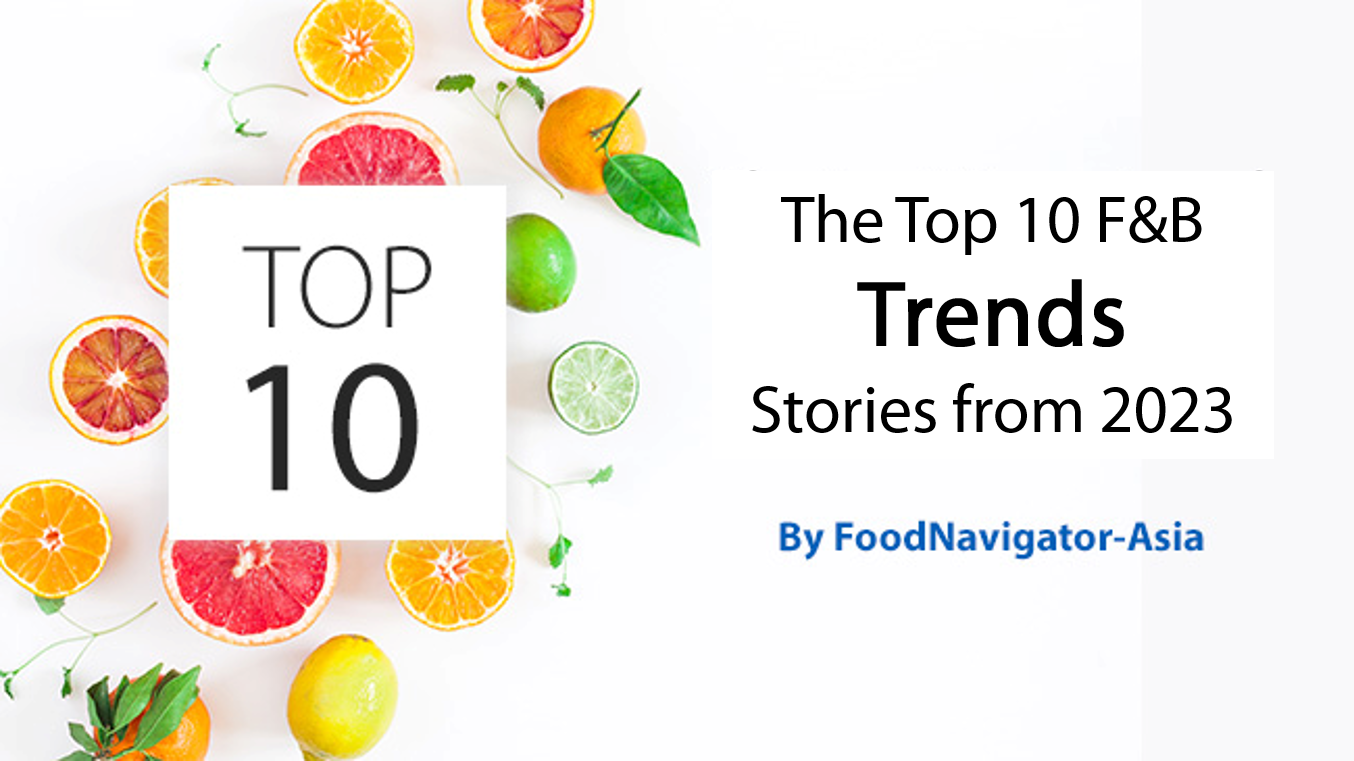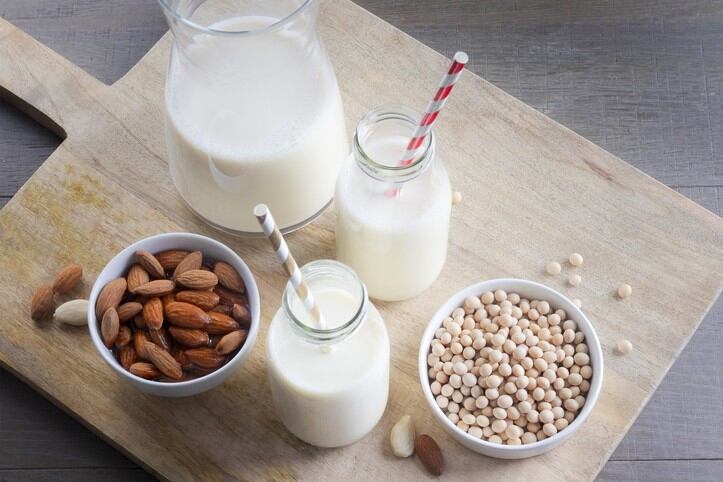Premium affordability the talk of the town
While the idea of a product being ‘premium’ seems at a juxtaposition with it being ‘affordability’, this ironic contrasting combination is precisely what food and beverage manufacturers need to strive towards in 2024 as it is what consumers are increasingly demanding.
Premium affordability emerged as a major theme of discussion across various trade shows this year, with many firms revealing business and innovation strategies stemming from these traits.
One of these companies was industry heavyweight Nestle.
“We [saw] that the emerging markets in which we do business performed particularly strongly earlier this year with some 10% in organic growth, even stronger in comparison to developed markets at 7.1%,” Nestle CEO Mark Schneider told us.
“It was clear that this was [bolstered] by our strategy to grow affordable offerings, which has seen very high demand [and] helped us to be very resilient in a very turbulent year, [and] we have seen consumers here respond very well to good product innovation so this has become an important priority here.”
In Malaysia where affordable product innovation has long been a priority due to the high price sensitivity in the local market as well as the many surrounding markets that Nestle Malaysia supplies to, local leadership has also emphasised that high quality is important.
“While headline inflation has been declining, [there are still] uncertainties in commodity prices and currency rates [so product affordability is very important], but we must also continue to focus on delivering high quality,” Nestle Malaysia CEO Juan Aranols said.
“It is via delivering great-tasting and nutritious products that we can meet the diverse needs of Malaysian consumers, [and find continuous widespread demand for our] wide product portfolio and continuous product innovation.”
This realisation has not only been amongst large MNCs, but also emerging firms such as Singapore juice start-up WOLF+WALD which has highlighted a combination of premiumisation and affordability as its main value proposition.
“We want our juices to be considered affordable premium products, so that even consumers with slightly smaller household budgets are able to try these,” WOLF+WALD Founder Ernany Jasmin said.
“[This is the way] to reach and be accessible to consumers, so we can reach our goal to break the stereotype of juices being just a morning drink or for detoxification.”
With more and more firms moving to innovate in the premium affordability space, it is plain that this will be a strong guiding trend in the year to come.
Not just a ‘meat alternative’ – Mimicry is out, health is in for plant-based products
The plant-based meat industry enjoyed a few years of extreme popularity before and during the COVID-19 lockdowns, but so far it cannot be denied that these products have not yet managed to become truly mainstream due to various pricing and other consumer concerns.
This slower-than-expected progress has prompted many companies in the sector to revamp their strategies in 2023 with many seeing a transition away from meat mimicry being the best way forward, and instead choosing to focus on other purchase drivers such as nutrition and health instead.
“Trying to make plant-based products mimic meat and seafood is actually one of the more difficult tasks in the sector - it takes a lot of effort and investment to do this, and this current strategy is not making as strong an impact as we expected,” Thai Union Alternative Proteins Managing Director Maarten Geraets told us.
“What APAC really needs currently is to accelerate progress to move beyond mimicry, to make alternative proteins a category of its own, that just so happens to be made out of plant proteins.
“This is the only way that plant-based will really be able to make an impact – right now we can see that plant-based products are available everywhere, but not exactly flying off the shelves in many markets – and this defeats the whole purpose, so mimicry is not likely to be the way forward.”
As it is, many firms have already moved past marketing plant-based meats as ‘more sustainable’ or ‘meat alternatives’ in Asia, but are instead placing much more focus on the health and nutrition that these can offer.
One such example is China’s Haofood, which has developed a clean label range of products to appeal to consumers on the lookout for healthier protein alternatives.
“Our data has shown us that plant-based consumers have very specific demands, especially in China,” Haofood Founder and CEO Astrid Prajogo told us.
“The main focus is to get a protein option with no hormones, no cholesterol, no antibiotics, and no additives – Many plant-based meat products use additives, which puts consumers off and turns them away from the category.
“They also want transparency in the ingredients and tend to ask why they are in the products, especially for consumers in the health segment – all of this shows that consumers are becoming very mindful of what they are eating, and culminated in the need for a clean label product in the market.”
With Asian consumers today becoming increasingly health-conscious, this trend is likely to also grow in importance and see the regional plant-based category gradually move away from meat mimicry in the coming year.
When a drink is not just a drink – RTD convenience and relatability driving beverage category
While there can be no doubt that it remains key for beverages to provide refreshment and taste good, moving into 2024 it has also become apparent that convenience and relatability are becoming increasingly important purchase drivers for consumers in the region, especially when faced with an abundance of choice.
This has been particularly clear for beverages such as coffee and tea which have traditionally been purchased in powder or leaf form and consumed by adding hot water, with an increasing number of companies in Asia choosing to launch ready-to-drink products in response to consumer demand.
Japan saw two of these firms, beverage household names Kirin and Asahi which launched separate ranges of sugar-free teas earlier this year, all in RTD format.
“We have seen the market for sugar-free beverages grow continuously over the past few years due to heightened health awareness in Japan, greatly driving the demand for sugar-free teas including black tea and hojicha (roasted green tea),” Kirin Corporate Communications spokeswoman Katsura Muraoka told us.
“RTD beverages are also very popular in Japan whether it be alcoholic beverages, coffee or tea as many consumers purchase these on-the-go, so we relaunched our RTD Gogo-no-Kocha Oishii No Sugar range in response to current consumer trends after improving the flavour and aftertaste.”
Asahi also highlighted the rise in popularity of RTD teas in Japan, and the same was seen for coffee in markets such as Vietnam.
“We launched our new stick-pack coffee concentrate in Vietnam based on a ready-to-serve concept, where it can just be poured out into a cup with ice and drank with no fuss or extra effort needed to boil water to prepare the coffee,” Nestle Vietnam Coffee Business Executive Officer Mostafa Youssef told us.
“It is so important for a business like Nescafe which has traditionally been a powdered business to keep an eye on the emerging trends such as RTD and flavours, as this is an important way to recruit new consumers into the coffee category – so there is no doubt we will keep expanding our range, making it easier for new consumers to enjoy coffee by not only having traditional black options but also new ones with milk or coconut milk and so on.”
And beyond the packaging format and delivery, there are also firms that believe it is no longer enough to deliver products that are new, but these must also be able to tug at consumers’ emotions in order to produce that relatability.
“Consumers today, especially the younger generation, want more than just a physical experience when purchasing their beverages, so this goes beyond just the ingredients used or the nutrition it can give, instead going deeper into making an emotional connection,” Coca-Cola APAC R&D Centre Senior Director Amy Song said.
“So it is no longer enough to just label products as zero-sugar or immune-boosting, as with today’s science and technology any brand can offer that – it is the emotional connection that is crucial to help consumers develop trust and confidence in a brand.
“To do this, the brand must make the consumer feel like they are valued, respected, accepted and so on, and this is where culture needs to play a big part in innovation, to being in the human touch into the context of the actual beverages.”
Given it is younger consumers that are driving many of these trends, this is not expected to go away any time soon, and so RTD and relativity are likely to continue to play a big role in the beverage sector in 2024.
Low-to-no alcohol beverages here to stay
Low-to-no alcohol or NOLO beverages are one of the few novel food and beverage categories that have silently yet successfully made a niche for itself both on supermarket shelves and foodservice outlets, riding on its appeal amongst younger consumers and healthier beverage seekers.
As a category, NOLO only really entered into the spotlight a few years back with the advent of specialist brands such as Lyre’s and Seedlip as well as the participation of big beer brands such as Heineken with Heineken 0.0 and Somersby with Somersby 0.0.
But although it remains somewhat small in terms of size, these options are now available on a widespread scale.
Furthermore, adult sodas has branched out from the segment, representing drinks that do not attempt to mimic or emulate any existing alcoholic drinks but instead provide a different adult drinking experience via flavours and sophistication.
Many more successful alcoholic brands are also looking to enter the category, including plum liqueur specialist CHOYA.
“Alcoholic beverages with low alcohol content (7.5%) and some RTDs, such as chuhai canned drinks, have become increasingly popular and continue to enjoy this popularity,” CHOYA Director Yuki Shimizu told us.
“This is why we have developed our new CHOYA Sarari products based on an ‘easy to drink’ concept with lower alcohol levels, targeting the younger generation, alcohol beginners, and those who want to drink alcohol but are unable to take strong liquor.
“There is another advantage to these in terms of affordability as well, as our traditional plum liqueurs with higher alcohol content can be quite expensive in overseas markets like ASEAN, whereas this range is more affordable and is thus more accessible to new consumers too.”
NOLO drinks have already become more or less an expected presence in most shops and bars in western markets, and it appears that the same is likely to follow in this region as well.
“This is no longer a trend, but quite normalised in markets such as the UK where a third of pub visits are alcohol-free,” New Zealand non-alcoholic cocktails brand AF Drinks Founder Lisa King added.
“And indeed, when you start having beer companies such as Guinness producing zero-alcohol versions of one of the most iconic and popular beers and putting them into taps, [it is clear that] all of the alcohol companies are looking at this move very seriously.”
Snacking security – Consumers continue to seek out indulgence, familiarity and localisation
Snacking is another category that saw a boom during the pandemic and managed to continue its success after lockdowns were lifted due to snacking habits formed during this time – and this trend is unlikely to go away any time soon.
According to snacking giant Mondelez, the indulgence and comfort that a snack brings is hard to replace for the average consumer, and is expected to continue good tidings for the industry into 2024.
“Snacking trends this year have been resilient amid turbulent times - Inflationary pressures have not stopped eight in ten consumers from finding room in their budget for snacks,” Mondelez AMEA International VP Strategy and Commercial Excellence Tomas Centeno told FoodNavigator-Asia.
“That said, while snacking is seen as essential, 84% of consumers are selective about the indulgent snacks they choose, starting to develop what we call ‘mindful snacking’ habits.
“[This is where] they are getting more informed about their snacking choices, portion out snacks before eating them and check nutrition labels on snacks before making a purchase.”
The firm has strived strongly to connect with consumers in this region via both localised flavours as well as current interests, as evidenced by its product innovation.
“[Leveraging] on the success that we have achieved from customising our products to local preferences, [some of our innovation in] China included localising the iconic Oreo and developing a range of flavours such as Oreo Wasabi, Oreo Chilli Chicken, and Oreo Rainbow,” he added.
“We have also been connecting with the cultural preferences of our consumers – For example, one of the highlights [of 2023] was a collaboration with K-pop band, BLACKPINK, to develop a special edition Oreo packaging in South East Asia.
“Looking ahead, we believe that [the core snacking categories] will continue to show consistent growth, especially in emerging markets.”





